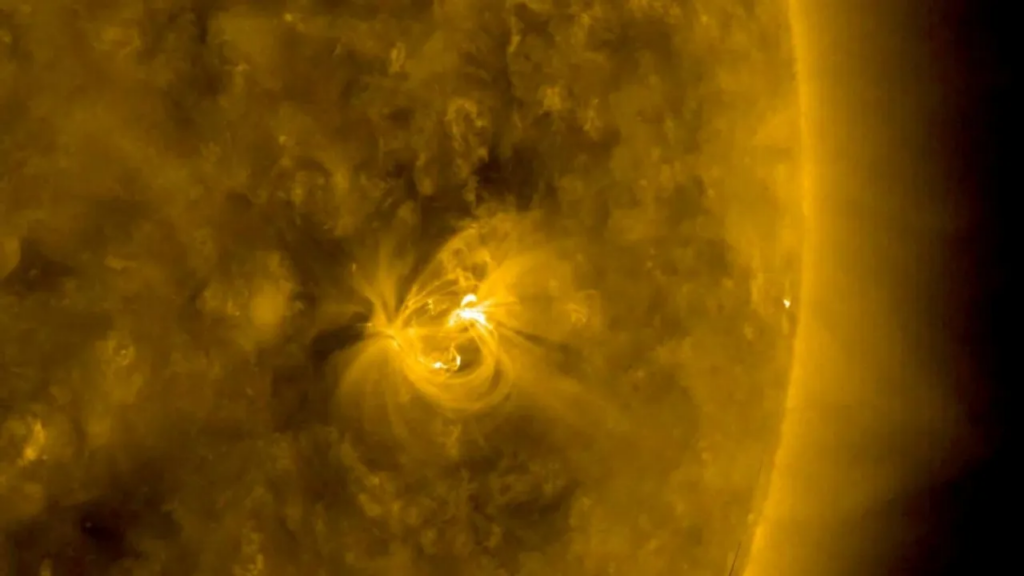Introduction
- A recent study has revealed that the current solar maximum may be linked to a lesser-known 100-year solar cycle.
- This cycle, known as the Centennial Gleissberg Cycle (CGC), is believed to be ramping up, potentially leading to increased solar activity and vibrant auroras across the globe.

Understanding Solar Cycles
- Solar activity fluctuates in an approximately 11-year cycle, transitioning from solar minimum to solar maximum.
- During solar maximum, the sun exhibits chaotic behavior, producing solar storms and increased sunspot activity.
- The Hale cycle and the CGC are significant factors influencing these solar activities.
The Centennial Gleissberg Cycle (CGC)
- The CGC alters the strength of sunspot cycles every 80 to 100 years.
- Recent research suggests that the CGC may have “turned over,” indicating a new phase of solar activity.
- This could explain the unpredictability of the current solar maximum, which began in early 2024.
Implications of Increased Solar Activity
- Enhanced solar activity poses risks to Earth-orbiting spacecraft, as satellites can be affected by radiation spikes.
- The rapid growth of private satellite constellations may exacerbate these issues in the coming decades.
- Astronauts may also face increased radiation exposure, especially with more planned missions to the Moon and Mars.
Recent Solar Events
- The current solar maximum has already produced extreme space weather phenomena, including a significant geomagnetic storm in May 2024.
- This storm resulted in some of the most widespread auroras seen in the last 500 years, showcasing the potential beauty and danger of increased solar activity.
Conclusion
- As the mysterious 100-year solar cycle awakens, we may witness stunning auroras and face challenges related to space weather.
- Understanding these cycles is crucial for preparing for the impacts on technology and human activities in space.



